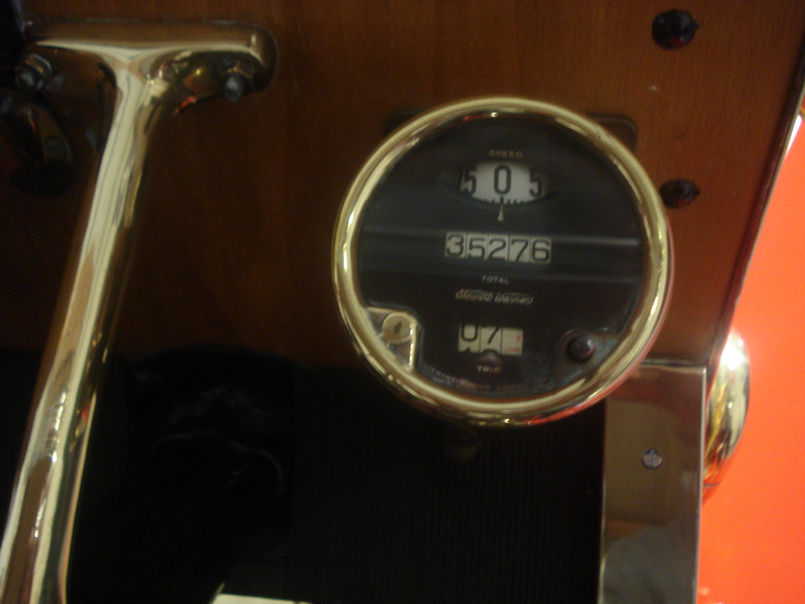
26 Sep Memorabilia: Speedometers
This month, FMM Assistant Curator Cheslynne Ruiters takes a look at the history of speedometers…
If you look at the dashboard in your car, there are a variety of gauges and instruments on view monitoring such functions as oil pressure, coolant temperature, fuel level, engine revs and more. However, the most prominent – and perhaps the most important – device is the speedometer, which measures and displays the current speed of a vehicle. Charles Babbage is credited with creating an early type of speedometer, which was originally patented by Otto Schultze on 7 October 1902. The mechanism used a rotating flexible cable usually driven by gearing linked to the vehicle’s transmission.
More specifically, the rotating cable is attached to a set of gears in the automobile’s transmission. This cable is directly attached to a permanent magnet in the speedometer assembly, which spins at a rate proportional to the speed of the vehicle. As the magnet rotates, it manipulates an aluminium ring, pulling it in the same direction as the revolving magnet field. The ring’s movement is counteracted by a spiral spring. Attached to the aluminium ring is the pointer, which indicates the speed of the vehicle by marking the balance between these two forces. As the vehicle slows, the magnetic force on the aluminium ring lessens, and the spring pulls the speedometer’s pointer back to zero.
The Oldsmobile Curved Dash Runabout, released in 1901, was the first automobile line equipped with a mechanical speedometer but, generally speaking, the first speedometers were expensive and initially available only as options. It wasn’t until 1910 that automobile manufactures began to include the speedometer as standard equipment. Incidentally, for other means of transport speedometers have different, specific names; for a boat it is a pit log, for an aircraft it is an airspeed indicator.
Electronic speedometers are almost universally present in later-model cars. In this type of gauge, a pulse generator installed in the transmission measures the vehicle’s speed. It communicates this via electric or magnetic pulse signals, which are either translated into an electronic read-out or used to manipulate a traditional magnetic gauge assembly. Since the circuit is measuring the number of wheel rotations, it can also keep count of how far you’ve travelled, doubling up as an odometer (distance measuring meter). Electronic speedometers can also display speed with analog pointers and dials, just like traditional eddy current speedos: in this case, the electronic circuit drives a controlled electric motor called a stepper motor, which rotates the pointer through an appropriate angle. Electronic speedometers are more reliable and compact than mechanical ones, and the motion sensors can be any distance from the display that shows the speed, making them suitable for any kind of vehicle from a bicycle to a 40-ton truck.



